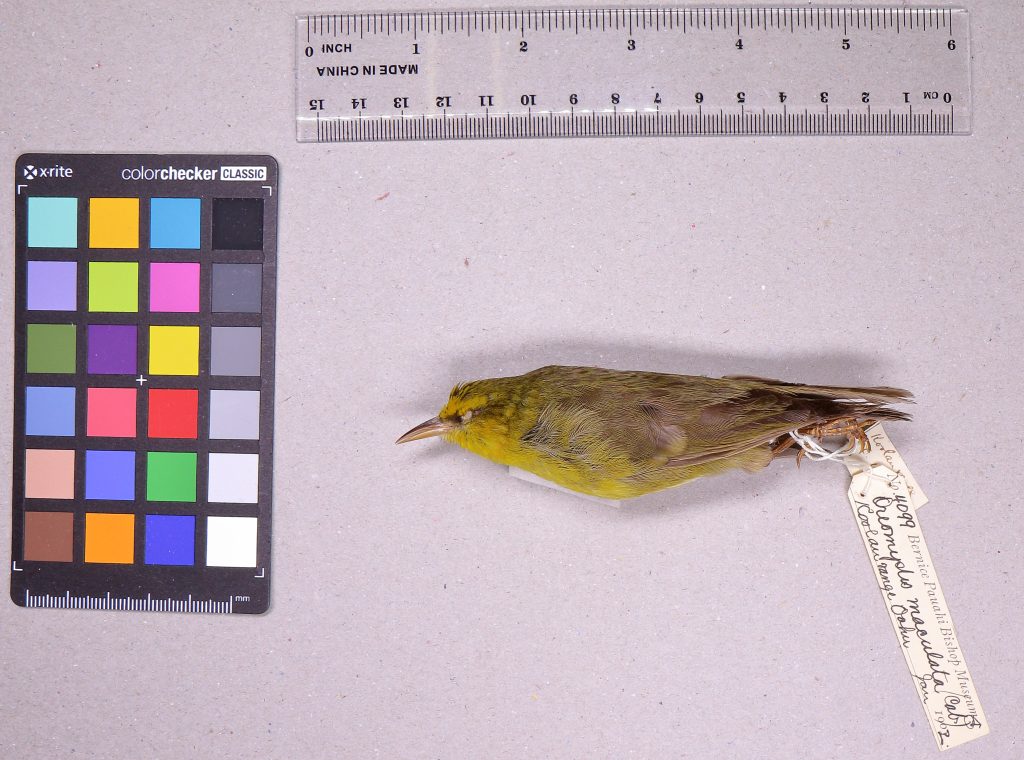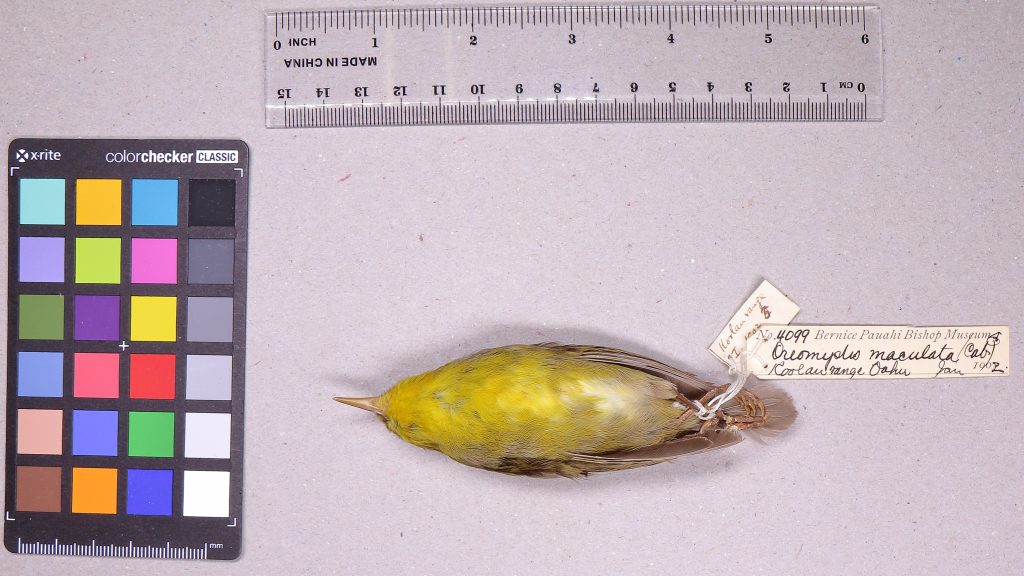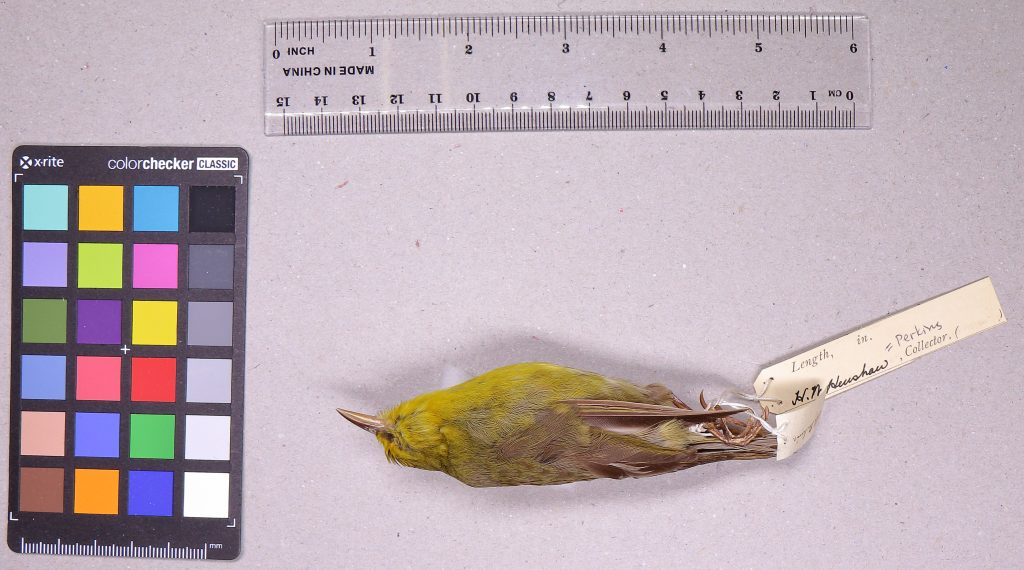O‘ahu ‘Alauahio

Names
- ʻŌlelo Hawaiʻi: O‘ahu ‘Alauahio
- Common: Oʻahu Creeper
- Scientific: Paroreomyza maculata
Conservation Status
- Presumed Extinct
- Federally Listed as Endangered
- States Listed as Endangered
- State Recognized as Endemic
- NatureServe Heritage Rank GH—Possibly Extinct
- IUCN Red List Ranking—Critically Endangered (Possibly Extinct)
- Revised Recovery Plan for Hawaiian Forest Birds—USFWS 2006
Species Information
The O‘ahu ‘alauahio is a small and insectivorous Hawaiian honeycreeper (Family: Fringillidae) endemic to O‘ahu. Males are olive-green above with bright yellow underparts and forehead, females are grayish-green above and yellowish white below. The plumage of this species is very similar to that of the O‘ahu ‘amakihi (C. flavus). The song of the O‘ahu ‘alauahio has never been described. The O‘ahu ‘alauahio is insectivorous and forages by methodically searching and probing the bark of large branches and tree trunks. Like other Hawaiian creepers, ‘alauahio joins foraging flocks during non-breeding seasons. Little is known about the life history or breeding biology of the species, but it is likely similar to that of the Maui creeper (P. montana).
Distribution
Unknown. Probably extinct. Historical range is poorly known as it was likely declining when first discovered, but it historically occurred in both the Ko‘olau and Wai‘anae ranges.
Habitat
Unknown. Once occupied mid-elevation forests of ‘ōhi‘a (Metrosideros polymorpha) and koa (Acacia koa). Historically, it was reported to prefer large koa trees, but they also were reported in areas without koa. All recent observations occurred in mixed koa/‘ōhi‘a forest between 300 and 600 meters (1,000 – 2,000 feet). Forests where the O‘ahu ‘alauahio historically occurred are largely managed by the State of Hawai‘i, the U.S. Fish and Wildlife Service (USFWS), or the U.S. Military.
Threats
Unknown. However, the O‘ahu ‘alauahio likely were susceptible to the same factors that threaten other native Hawaiian forest birds including habitat loss and degradation, predation by introduced mammals, and disease. For O‘ahu ‘alauahio, the following was likely of particular concern:
- Disease. The fact that no habitat above 1,250 meters (4,100 feet) occurs on O‘ahu, and that historical accounts report the species only above 350 meters (1,500 feet) suggests that disease played an important role in the species’ decline.
Additional Resources
For more information and references visit the DLNR State Wildlife Action Plan factsheets. DOFAWʻs species pages and State Wildlife Action Plan fact sheets are provided for general information and are not meant to be a citable, original source of data. If you are a student, researcher, or writer looking for a citable source, please explore the references below or find other original data sources, rather than citing these webpages. The references below were provided by the authors of the State Wildlife Action Plan fact sheets at the time of drafting:
- Baker PE, Baker H. 2000. Kākāwahie (Paroreomyza flammea) and O’ahu alauahio (Paroreomyza maculata). In The Birds of North America, No. 503 (Poole A, Gill F, editors.). Philadelphia, (PA): The Academy of Natural Sciences; and Washington DC: The American Ornithologists’ Union.
- IUCN Red List of Threatened Species. 2015. Version 2014.3. Available at: www.iucnredlist.org. (Accessed May 2015).
- U.S. Fish and Wildlife Service. 2006. Revised Recovery plan for Hawaiian forest birds. Portland, (OR): U.S. Fish and Wildlife Service.




